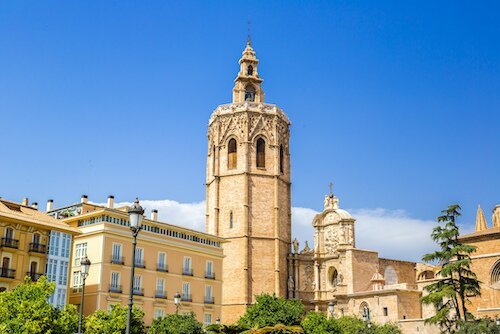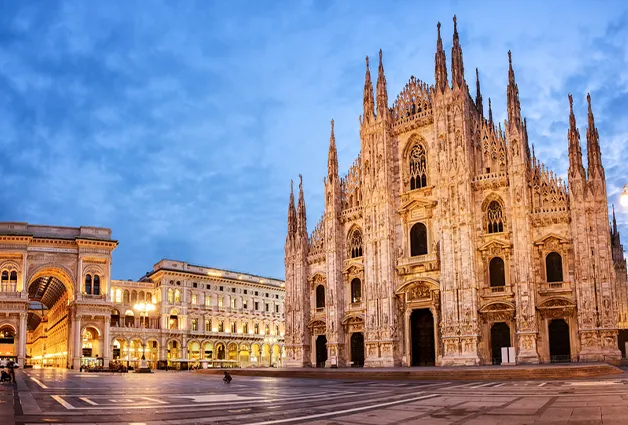Plaza de la Virgen

Plaza de la Virgen, nestled in the historic center of Valencia, is a captivating square that serves as a vibrant hub for both locals and tourists. Surrounded by some of Valencia’s most significant landmarks, the plaza exudes a timeless charm with its blend of historical architecture and cultural significance.
At the heart of the square stands the iconic Turia Fountain, a symbol of the city's connection to the Turia River. The plaza is flanked by three monumental buildings: the Valencia Cathedral, the Basilica of the Virgin of the Helpless, and the Generalitat Palace.
Plaza de la Virgen is not just a place of historical interest but also a vibrant social and cultural hub. The square is often bustling with activity, from street performers and local artisans to lively cafes and restaurants offering a taste of authentic Valencian cuisine. Visitors can enjoy traditional tapas and paella while soaking in the atmosphere of this historic plaza.
The plaza's central location makes it an ideal starting point for exploring the surrounding historic streets and attractions of Valencia, ensuring that every visit is filled with rich experiences and lasting memories.
Serranos Towers

The Serranos Towers (Torres de Serranos) stand as one of Valencia's most iconic and historically significant landmarks. Originally constructed in the late 14th century as part of the city's defensive walls, these imposing Gothic towers served as a primary gateway into the medieval city.
Designed by architect Pere Balaguer, the Serranos Towers are a stunning example of Gothic military architecture, featuring robust stone facades, crenelated battlements, and imposing gatehouses. For centuries, they were crucial in protecting Valencia from invaders and were later used as a prison.
Today, they are one of the best-preserved remnants of the old city walls and offer a fascinating glimpse into Valencia's medieval past. The Serranos Towers are a must-visit attraction for anyone exploring Valencia. Climbing to the top of the towers provides visitors with breathtaking panoramic views of the city.
The towers also serve as a cultural destination, hosting various events and exhibitions throughout the year.
The Beaches

Valencia’s seaside location provides visitors with some of the best beaches in Spain. Given that the country’s southern and eastern coasts are along the Mediterranean, there are a lot of beaches to choose from.
Las Arenas is a long stretch of gorgeous golden sand while Patacona is near the city center. If travelers want to get away from the crowds of the two city beaches, then they can head south to La Garrofera. This unspoiled spot is perfect to get away from everyone and everything. Anyone going to Valencia during the warmer months should make a day at the beach one of the many activities they do.
The Garden of Turia
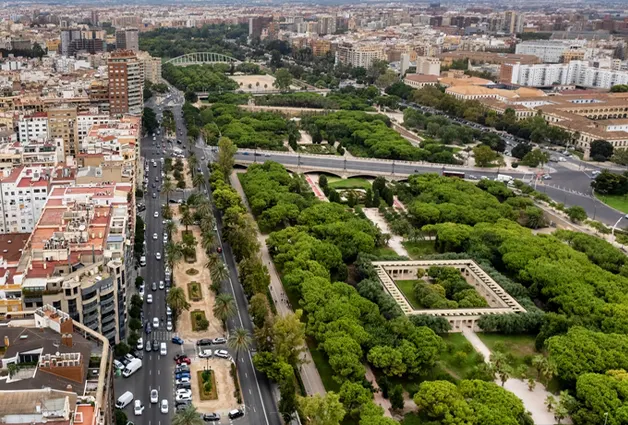
At one time, Valencia was split into two by the Turia River. After flooding led to a crisis in the 1950s, the city decided to reroute the river to prevent such events from happening again. In the wake of the Turia River’s rerouting, a river bed was left exposed running through the center of Valencia. The city turned the riverbed into a park that snakes its way through Valencia. It is the perfect destination for anyone looking to explore Valencia’s quieter side.
Travelers can jog or cycle through the park. There are also areas to do other sports activities as well. The Garden of Turia also contains cafes, bars, and restaurants offering refreshment and food for parkgoers. It is also home to one of the most popular children’s activities in Valencia. A large Gulliver giant from the book “Gulliver’s Travels” was built in the park. It was designed so kids could climb, slide, and play on the massive installation. Families will find plenty to see and do inside The Garden of Turia.
The City of Arts and Sciences

The City of Arts and Sciences is an architectural and cultural masterpiece that has become one of the Valencia's most iconic landmarks. Spanning nearly two kilometers along the former riverbed of the Turia River, the sprawling open-air complex has six main buildings: L'Hemisfèric, Museu de les Ciències Príncipe Felipe, L'Umbracle, L'Oceanogràfic, Palau de les Arts Reina Sofía, and the Ágora.
Each one boasts a unique architectural style that blends seamlessly with the others, creating a visually stunning landscape that attracts millions of visitors every year.
L'Hemisfèric houses an IMAX cinema and planetarium offering an immersive science and astronomy experience. Museu de les Ciències Príncipe Felipe, shaped like a whale's skeleton, is an interactive science museum where visitors can engage with technology and environmental science exhibits.
L'Umbracle is an open-air gallery and garden featuring native plants and contemporary sculptures, providing a serene walkway with spectacular views of the complex.
Circuit Ricardo Tormo

Located in Cheste just 31 minutes away from Valencia, Circuit Ricardo Tormo is a world-class motorsport venue that is a premier destination for racing fans and tourists. Opened in 1999 and named after the famous Spanish motorcycle racer Ricardo Tormo, the circuit is known for its exceptional facilities and exciting events.
The track's unique layout, which can be configured into multiple variations, offers a challenging course for drivers and riders, making it a favorite among professional racers. The circuit hosts many high-profile motorsport events throughout the year, including the MotoGP Valencian Grand Prix, which marks the season finale and attracts thousands of fans.
With a seating capacity of over 120,000, the circuit provides ample viewing opportunities for spectators to enjoy the adrenaline-pumping races.
Circuit Ricardo Tormo is also home to the Formula GT Driving Experience. Guests can get behind the wheel of a supercar and drive around the famed Spanish racetrack. This experience has a fixed calendar, so check availability before booking your trip.
Mercado Central
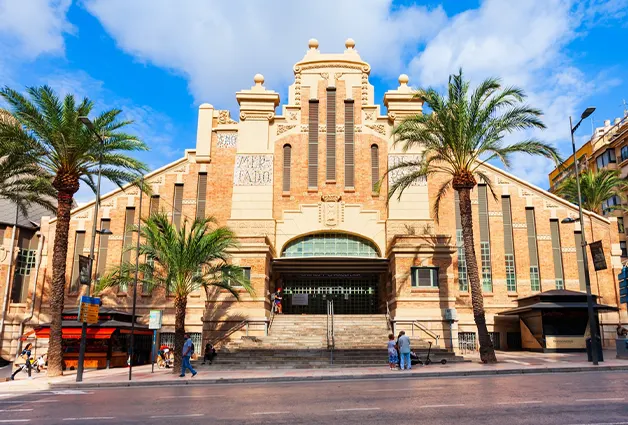
The Mercado Central is one of the oldest European markets still in use today. Renovated in 2010, visitors to the Mercado Central will be immersed in local culture. Anyone looking to get to know the city on a deeper level should experience the market, its stalls, and the people inside it.
The market is located amongst many of the other tourist attractions in Valencia, making it easy to find. Its architecture allows it to stand out amongst the city’s other buildings and hotspots.
Along with stalls selling unique items and food, tourists will find restaurants and bars found nowhere else in Valencia. For anyone unfamiliar with a traditional European market, there is nothing like the Mercado Central in the heart of Valencia.
L'Oceanogràfic Valencia
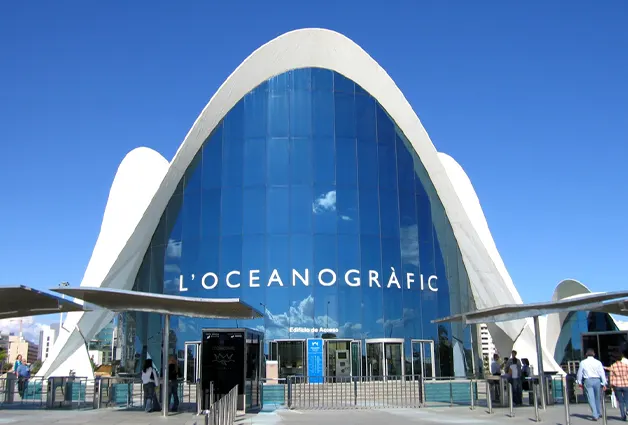
Oceanogràfic is the largest aquarium in Europe, with about 45,000 animals inside its walls. It is a fantastic option for the whole family and also has the longest underwater tunnel in Europe. If you like dolphins, you certainly don't want to miss the dolphin show.
During your exploration of this wonderful oceanarium, take a break and grab a bite to eat in the Submarine restaurant, which, true to its name, is surrounded by tanks of underwater life with seethrough walls that offer breathtaking views. Hopefully, that won't be too much of a distraction while you eat.
Lonja de la Seda

Lonja de la Seda, or Silk Exchange, is one of Valencia's most magnificent and historically significant buildings. Constructed between 1482 and 1548, this UNESCO World Heritage Site is a prime example of late Gothic architecture, reflecting Valencia's prosperity during the late medieval period.
The building was originally used for trading silk, a key industry in Valencia at the time. The Lonja comprises several distinct sections, including the Contract Hall (Sala de Contratación), which has a stunning vaulted ceiling and twisted columns, and the Orange Tree Patio (Patio de los Naranjos), where merchants discussed business. Another section is the Consulate of the Sea (Consolat del Mar), which served as a maritime tribunal.
The elaborate carvings, intricate stonework, and beautiful stained glass windows make the Lonja de la Seda a must-visit for architecture enthusiasts and history buffs. It offers a fascinating glimpse into Valencia's rich commercial past and architectural heritage.
Barrio del Carmen

One of the oldest areas in Valencia, the streets of Barrio del Carmen perfectly balance the ancient architecture with more modern-day buildings to deliver a stunning journey through the ages. Now known as a hub for foodies who particularly love Mediterranean cuisine, the area also has influences from the Arabs that lived there during its construction. Enjoy dinner surrounded by this amalgamation of centuries of human history.
Valencia may not be the European tourist attraction that Madrid and Barcelona are. Nor does it have the glamor of Ibiza or Mallorca. However, Valencia has plenty of Spanish flavoring and feeling that those other tourist destinations don’t have. That is why it is a must-visit European city for culture vultures and petrolheads alike.
Weather

Local Favorite: Paella
Paella is a Spanish dish found at restaurants around the world. Its origin can be traced to Valencia. There are foodies out there that claim paella should only be dined on in Valencia and nowhere else in Spain. That is how important paella is to the local area. The Moors arrived in Spain in the 8th century, bringing their rice-growing skills with them. The area around the Albufera Lake proved ideal for rice growing, making the eastern Spanish region great for growing the grain. Traditional paella from Valencia contains chicken, white beans, and rabbit. Today, most paellas contain seafood, but mixed dishes with fish and chicken are available too.










